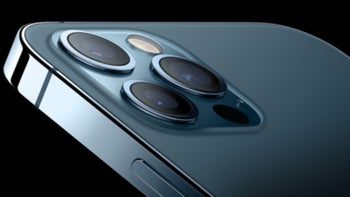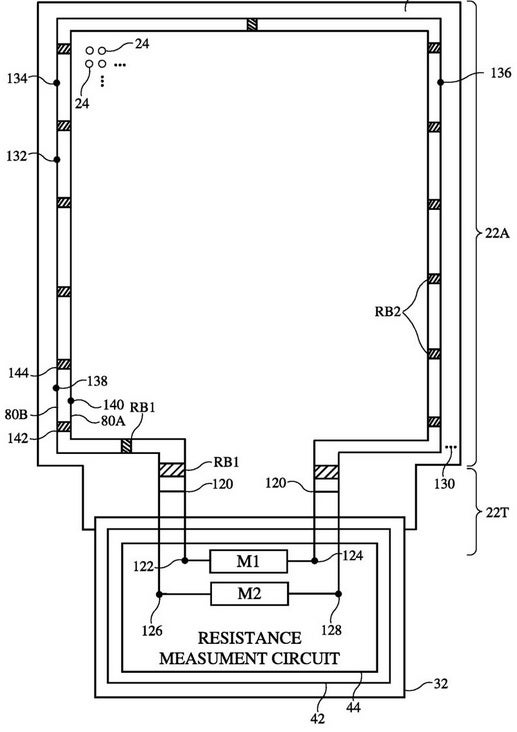Apple develops system that alerts iPhone users when their screens are cracked

Apple has received a patent from the U.S. Patent and Trademark Office (USPTO, via AppleInsider) with the rather long title of "Electronic device display with monitoring circuitry utilizing a crack detection resistor." Basically, the patent utilizes an interesting method to determine whether a particular iPhone unit is sporting a cracked or damaged display.
The patent reveals that Apple plans on adding an extra section to the display that is called the "bent tail portion." Thanks to the inclusion of a "strain sensing resistor and a temperature compensation resistor to measure strain," and "Strain measurements may be obtained by subtracting the temperature compensation resistance from the strain sensing resistance." By having a handle on the temperature of the screen, the iPhone will know whether the display is warm, more pliable, and thus less likely to sustain a crack.
Latest patent awarded to Apple helps alert users to cracks on their iPhone display
The patent also mentions a crack detection line that is "formed from a loop-shaped signal path with two parallel metal traces that runs along the periphery of the active area of the display. A crack detection circuit may use resistance monitoring circuitry to measure resistance changes in one or more segments of the crack detection line that are indicative of cracking in the line and in structures elsewhere in the display."

Drawing from new patent awarded Apple for a screen crack detector
In other words, checking the resistance of the crack detection line can help determine if there is, indeed, a crack in the screen. It is important to get a cracked screen fixed not only because of the aesthetics but also because over time a cracked display can lose its touchscreen capabilities. The patent was dated August 10th, 2021, assigned number 11,087,670 in the U.S., and was originally filed on February 13, 2018.
Back in 2017, Apple applied for a patent titled "Coverglass fracture detection" which planned on using sensors and software to detect cracks that had already started to form, or potential areas on a display where a crack might surface.
The technology laid out in the patent might come in handy when calling out cracks on a foldable Apple handset since those displays are more prone to getting damaged. Apple is reportedly working on a foldable iPhone model and there are reports that multiple prototypes have been created. Reportedly, there are two designs that Apple is looking at. One turns an iPhone sized display into an 8-inch tablet when opened similar to the design used on the Samsung Galaxy Z Fold 2.
Reliable analyst says that the first foldable iPhone will be delivered in 2023
The other design is a clamshell similar to the Galaxy Z Flip and the Motorola RAZR. These two phones start out fitting easily in your pocket and fold open to reveal a tall and thin display as large as most flagship phones. The latest report has Apple leaning toward the latter design with a display that opens up to become a 6.7 screen which is the same size of the display on the iPhone 12 Pro Max.
There is a fundamental difference between the two designs. The Galaxy Z Fold 2 carries an external 6.2-inch display that becomes a 7.6-inch screen when opened. So if you are out and about and need a tablet-sized display, this design would work out the best. On the other hand, the Galaxy Z Flip 2/RAZR design doesn't deliver a larger screen. It simply offers users a pocketable device that can easily open up to become a large screened handset.
Of course, we all want to know TF International analyst Ming-Chi Kuo's take on a foldable iPhone. When it comes to future iPhone and iPad models, Kuo knows all. And he says that Apple could release a foldable iPhone sporting a 7.5-inch to 8-inch display as soon as 2023. This would mean that Apple has decided to design its foldable iPhone similar to the Galaxy Z Fold 2 and it is not concerned with cannibalizing the iPad.













Things that are NOT allowed: